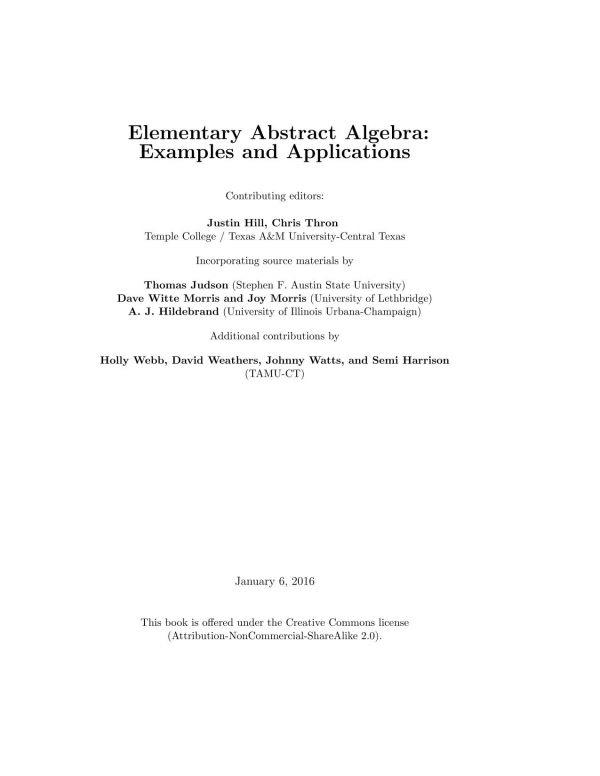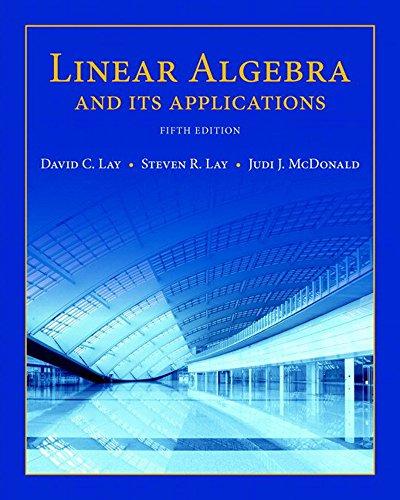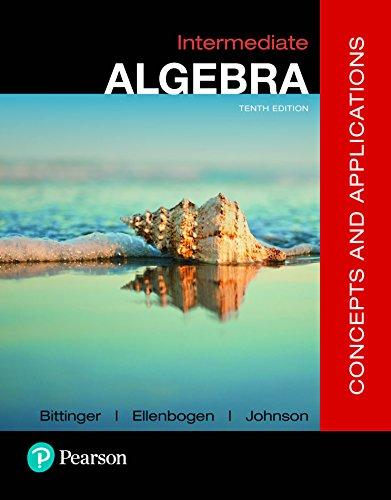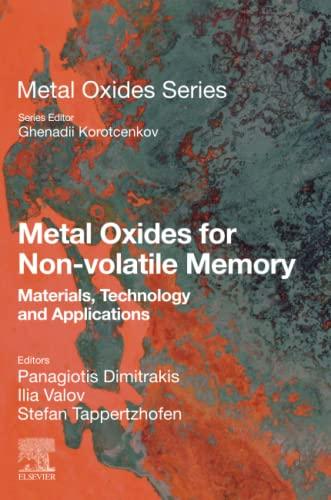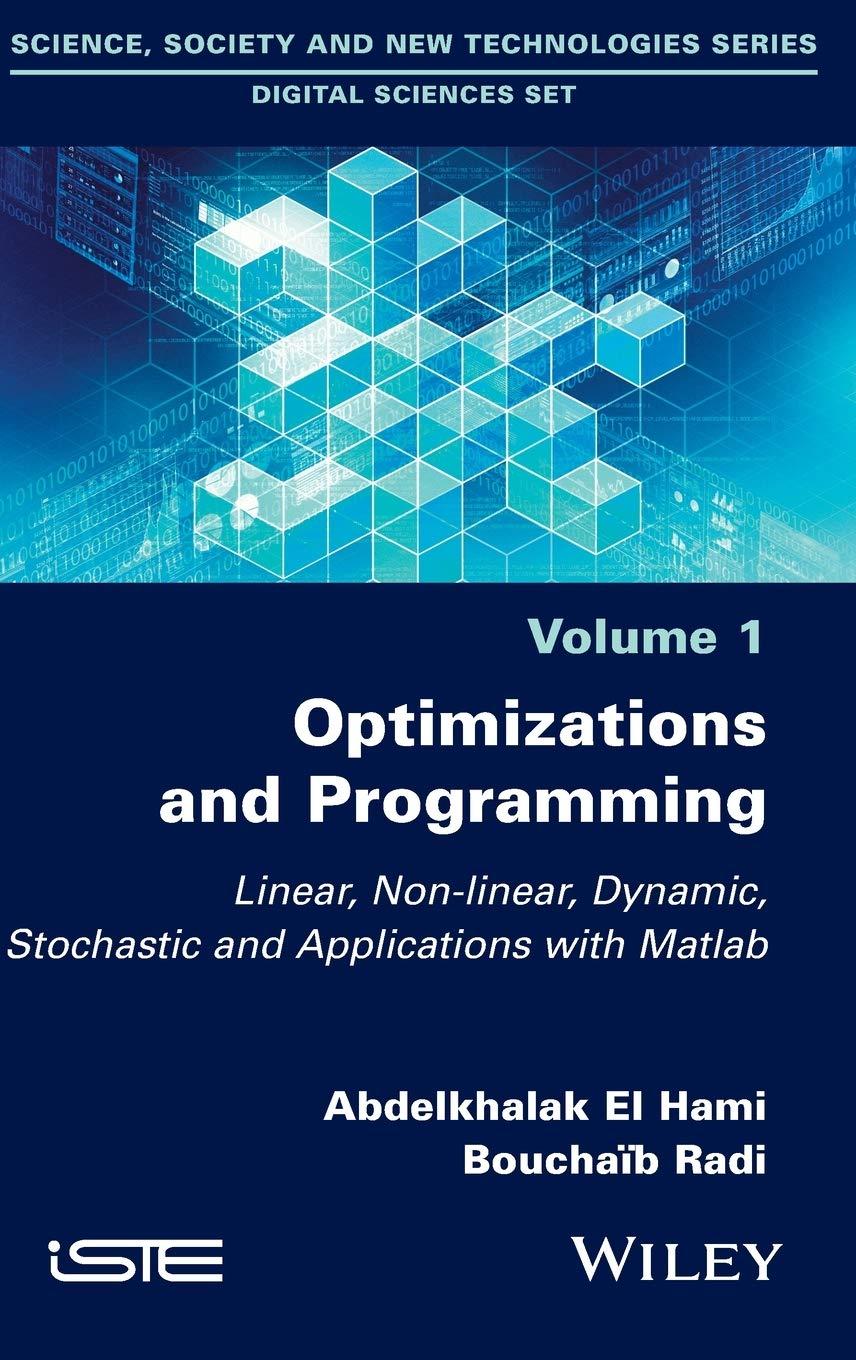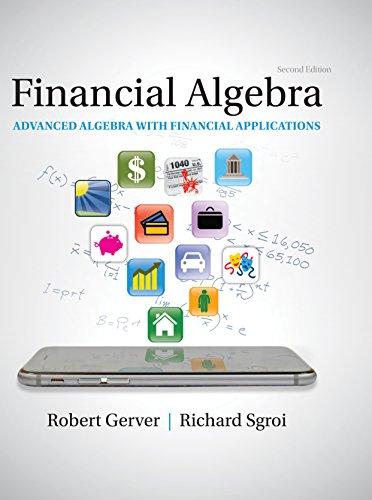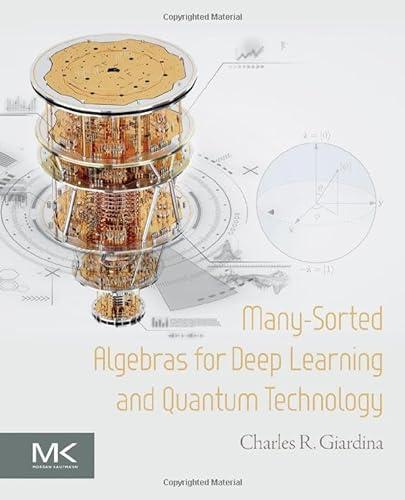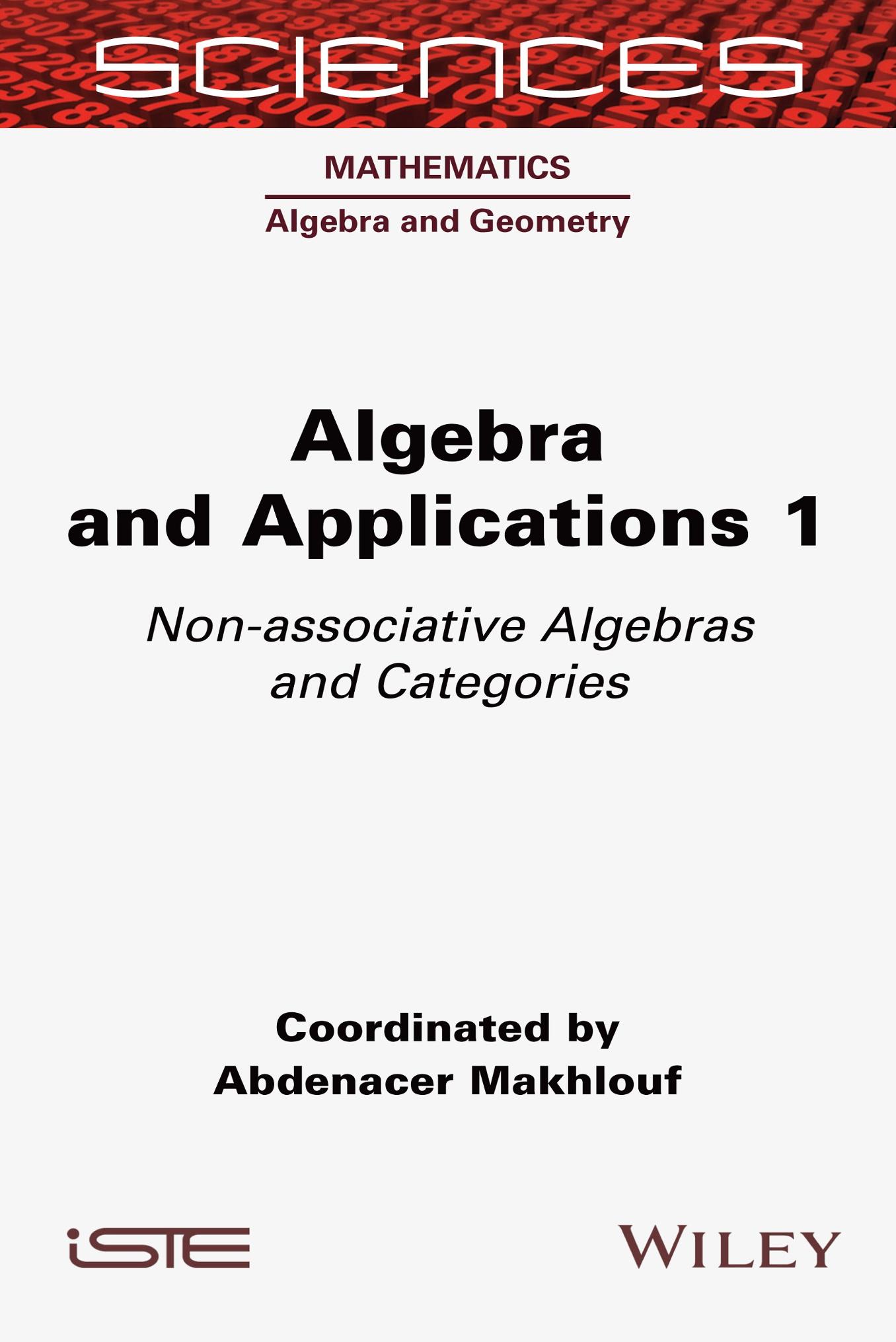Algebra and Applications 1
Non-associative Algebras and Categories
Coordinated by
Abdenacer Makhlouf
Apart from any fair dealing for the purposes of research or private study, or criticism or review, as permitted under the Copyright, Designs and Patents Act 1988, this publication may only be reproduced, stored or transmitted, in any form or by any means, with the prior permission in writing of the publishers, or in the case of reprographic reproduction in accordance with the terms and licenses issued by the CLA. Enquiries concerning reproduction outside these terms should be sent to the publishers at the undermentioned address:
ISTE Ltd
John Wiley & Sons, Inc.
27-37 St George’s Road 111 River Street London SW19 4EU Hoboken, NJ 07030 UK USA
www.iste.co.uk
www.wiley.com
© ISTE Ltd 2020
The rights of Abdenacer Makhlouf to be identified as the author of this work have been asserted by him in accordance with the Copyright, Designs and Patents Act 1988.
Library of Congress Control Number: 2020938694
British Library Cataloguing-in-Publication Data
A CIP record for this book is available from the British Library
ISBN 978-1-78945–017-0
ERC code:
PE1 Mathematics
PE1_2 Algebra
PE1_5 Lie groups, Lie algebras
PE1_12 Mathematical physics
Foreword .......................................xi
AbdenacerM AKHLOUF
Chapter1.JordanSuperalgebras ......................1
ConsueloM ARTINEZ andEfimZ ELMANOV
1.1.Introduction.................................1
1.2.Tits–Kantor–Koecherconstruction.....................4
1.3.Basicexamples(classicalsuperalgebras).................5
1.4.Brackets....................................8
1.5.Cheng–Kacsuperalgebras.........................10
1.6.FinitedimensionalsimpleJordansuperalgebras.............11
1.6.1.Case F isalgebraicallyclosedand char F =0 ............11
1.6.2.Case char F = p> 2,theevenpart J0 issemisimple........11
1.6.3.Case char F = p> 2,theevenpart J0 isnotsemisimple......13
1.6.4.Non-unitalsimpleJordansuperalgebras................13
1.7.Finitedimensionalrepresentations.....................14
1.7.1.Superalgebrasofrank ≥ 3 .......................16
1.7.2.Superalgebrasofrank ≤ 2 .......................17
1.8.Jordansuperconformalalgebras......................21
1.9.References..................................23
Chapter2.CompositionAlgebras ......................27 AlbertoE LDUQUE
2.1.Introduction.................................27
2.2.Quaternionsandoctonions.........................28
2.2.1.Quaternions...............................28
2.2.2.Rotationsinthree-(andfour-)dimensionalspace..........31
2.2.3.Octonions.................................33
2.3.Unitalcompositionalgebras........................35
2.3.1.TheCayley-Dicksondoublingprocessandthegeneralized Hurwitztheorem................................37
2.3.2.IsotropicHurwitzalgebras.......................41
2.4.Symmetriccompositionalgebras......................43
2.5.Triality....................................50
2.6.Concludingremarks.............................54
2.7.Acknowledgments..............................55
2.8.References..................................55
Chapter3.Graded-DivisionAlgebras ....................59 YuriB AHTURIN ,MikhailK OCHETOV andMikhailZ AICEV
3.1.Introduction.................................59
3.2.Backgroundongradings..........................62
3.2.1.Gradingsinducedbyagrouphomomorphism............62
3.2.2.Weakisomorphismandequivalence..................63
3.2.3.Basicpropertiesofdivisiongradings.................63
3.2.4.Gradedpresentationsofassociativealgebras.............64
3.2.5.Tensorproductsofdivisiongradings.................68
3.2.6.Loopconstruction............................70
3.2.7.Anotherconstructionofgraded-simplealgebras...........72
3.3.Graded-divisionalgebrasoveralgebraicallyclosedfields........75
3.4.Realgraded-divisionassociativealgebras.................77
3.4.1.Simplegraded-divisionalgebras....................77
3.4.2.Pauligradings..............................80
3.4.3.Commutativecase............................80
3.4.4.Non-commutativegraded-divisionalgebraswith one-dimensionalhomogeneouscomponents.................82
3.4.5.Equivalenceclassesofgraded-divisionalgebraswith one-dimensionalhomogeneouscomponents.................84
3.4.6.Graded-divisionalgebraswithnon-central two-dimensionalidentitycomponents....................90
3.4.7.Graded-divisionalgebraswithfour-dimensionalidentity components...................................94
3.4.8.Classificationofrealgraded-divisionalgebras,upto isomorphism...................................95
3.5.Realloopalgebraswithanon-splitcentroid...............96
3.6.Alternativealgebras.............................98
3.6.1.Cayley–Dicksondoublingprocess...................99
3.6.2.Gradingsonoctonionalgebras.....................100
3.6.3.Graded-simplerealalternativealgebras................101
3.6.4.Graded-divisionrealalternativealgebras...............102
3.7.Gradingsoffields..............................106
3.8.References..................................107
Chapter4.Non-associative C∗ -algebras ..................111 ÁngelR ODRÍGUEZ PALACIOS andMiguelC ABRERA G ARCÍA
4.1.Introduction.................................111
4.2. JB-algebras..................................111
4.3.Thenon-associativeVidav–PalmerandGelfand–Naimarktheorems..116
4.4. JB∗ -triples..................................128
4.5.Past,presentandfutureofnon-associative C ∗ -algebras.........141
4.6.Acknowledgments..............................145
4.7.References..................................145
Chapter5.Structureof H -algebras .....................155 JoséAntonioC UENCA M IRA
5.1.Introduction.................................155
5.2.Preliminaries:aspectsofthegeneraltheory................156
5.3.Ultraproductsof H -algebras........................164
5.4.Quadratic H -algebras............................166
5.5.Associative H -algebras...........................167
5.6.Flexible H -algebras............................173
5.7.Non-commutativeJordan H -algebras..................175
5.8.Jordan H -algebras.............................178
5.9.Moufang H -algebras............................182
5.10.Lie H -algebras...............................184
5.11.TopicscloselyrelatedtoLie H -algebras................188
5.12.Two-graded H -algebras.........................190
5.13.Othertopics:beyondthe H -algebras..................194
5.14.Acknowledgments.............................194
5.15.References.................................194
Chapter6.Krichever–NovikovTypeAlgebras:Definitions andResults .....................................199 MartinS CHLICHENMAIER
6.1.Introduction.................................199
6.2.TheVirasoroalgebraanditsrelatives...................201
6.3.Thegeometricpicture............................204
6.3.1.ThegeometricrealizationsoftheWittalgebra............204
6.3.2.Arbitrarygenusgeneralizations....................204
6.3.3.Meromorphicforms...........................206
6.4.Algebraicstructures.............................209
6.4.1.Associativestructure..........................209
6.4.2.LieandPoissonalgebrastructure...................210
6.4.3.ThevectorfieldalgebraandtheLiederivative............210
6.4.4.Thealgebraofdifferentialoperators..................211
6.4.5.Differentialoperatorsofalldegrees..................212
6.4.6.Liesuperalgebrasofhalfforms....................213
6.4.7.Jordansuperalgebra...........................213
6.4.8.Highergenuscurrentalgebras.....................214
6.4.9.KN-typealgebras............................215
6.5.Almost-gradedstructure..........................215
6.5.1.Definitionofalmost-gradedness....................215
6.5.2.SeparatingcycleandKNpairing....................216
6.5.3.Thehomogeneoussubspaces......................217
6.5.4.Thealgebras...............................219
6.5.5.Triangulardecompositionandfiltrations...............221
6.6.Centralextensions..............................221
6.6.1.Centralextensionsandcocycles....................222
6.6.2.Geometriccocycles...........................223
6.6.3.Uniquenessandclassificationofcentralextensions.........226
6.7.Examplesandgeneralizations.......................229
6.7.1.Thegenuszeroandthree-pointsituation...............229
6.7.2.Genuszeromultipointalgebras–integrablesystems........231
6.7.3.Deformations...............................232
6.8.Laxoperatoralgebras............................232
6.9.FermionicFockspace............................235
6.9.1.Semi-infiniteformsandfermionicFockspacerepresentations...235
6.9.2. b – c systems...............................237
6.10.Sugawararepresentation..........................237
6.11.Applicationtomodulispace........................240
6.12.Acknowledgments.............................240
6.13.References.................................240
Chapter7.AnIntroductiontoPre-LieAlgebras .............245 ChengmingB AI
7.1.Introduction.................................245
7.1.1.Explanationofnotions.........................245
7.1.2.Twofundamentalproperties......................246
7.1.3.Somesubclasses.............................247
7.1.4.Organizationofthischapter......................248
7.2.Someappearancesofpre-Liealgebras...................249
7.2.1.Left-invariantaffinestructuresonLiegroups:ageometric interpretationof“left-symmetry”.......................249
7.2.2.Deformationcomplexesofalgebrasandright-symmetric algebras.....................................250
7.2.3.Rootedtreealgebras:freepre-Liealgebras..............251
7.2.4.ComplexstructuresonLiealgebras..................251
7.2.5.SymplecticstructuresonLiegroupsandLiealgebras,phase spacesofLiealgebrasandKählerstructures.................252
7.2.6.Vertexalgebras..............................254
7.3.Somebasicresultsandconstructionsofpre-Liealgebras........255
7.3.1.Somebasicresultsofpre-Liealgebras................255
7.3.2.Constructionsofpre-Liealgebrasfromsomeknownstructures..258
7.4.Pre-LiealgebrasandCYBE........................261
7.4.1.Theexistenceofacompatiblepre-LiealgebraonaLiealgebra..261
7.4.2.CYBE:unificationoftensorandoperatorforms...........262
7.4.3.Pre-Liealgebras, O-operatorsandCYBE...............264
7.4.4.Analgebraicinterpretationof“left-symmetry”:construction fromLiealgebrasrevisited...........................265
7.5.Alargerframework:LieanaloguesofLodayalgebras..........266
7.5.1.Pre-Liealgebras,dendriformalgebrasandLodayalgebras.....266
7.5.2.L-dendriformalgebras.........................267
7.5.3.LieanaloguesofLodayalgebras....................269
7.6.References..................................271
Chapter8.Symplectic,ProductandComplexStructureson3-Lie Algebras .......................................275
YunheS HENG andRongTANG
8.1.Introduction.................................275
8.2.Preliminaries.................................278
8.3.Representationsof3-pre-Liealgebras...................280
8.4.Symplecticstructuresandphasespacesof 3-Liealgebras........282
8.5.Productstructureson 3-Liealgebras....................288
8.6.Complexstructureson 3-Liealgebras...................295
8.7.Complexproductstructureson 3-Liealgebras..............304
8.8.Para-Kählerstructureson 3-Liealgebras.................308
8.9.Pseudo-Kählerstructureson 3-Liealgebras................315
8.10.References.................................317
Chapter9.DerivedCategories .........................321
BernhardK ELLER
9.1.Introduction.................................321
9.2.Grothendieck’sdefinition..........................322
9.3.Verdier’sdefinition.............................323
9.4.Triangulatedstructure............................326
9.5.Derivedfunctors...............................331
9.6.DerivedMoritatheory............................332
9.7.Dgcategories.................................334
9.7.1.Dgcategoriesandfunctors.......................334
9.7.2.Thederivedcategory..........................336
9.7.3.Derivedfunctors.............................337
9.7.4.Dgquotients...............................338
9.7.5.Invariants.................................340
9.8.References..................................342
JordanSuperalgebras
ConsueloM ARTINEZ 1 andEfimZ ELMANOV 2
1 DepartmentofMathematics,UniversityofOviedo,Spain
2 DepartmentofMathematics,UniversityofCaliforniaSanDiego,USA
1.1.Introduction
Superalgebrasappearedinaphysicalcontextinordertostudy,inaunifiedway, supersymmetryofelementaryparticles.Jordanalgebrasgrewoutofquantum mechanicsandgainedprominenceduetotheirconnectionstoLietheory.Inthis chapter,wesurveyJordansuperalgebrasfocusingontheirconnectionstoother subjects.Inthissectionweintroducesomebasicdefinitionsandinsection1.2we givetheTits–Kantor–KoecherconstructionthatshowsthewayinwhichLieand Jordanstructuresareconnected.Insection1.3,weshowexamplesofsomebasic superalgebras(theso-calledclassicalsuperalgebras).Section1.4isaboutthenotion ofbracketsandexplainshowtoconstructsuperalgebrasusingdifferenttypesof brackets.Section1.5explainsCheng–Kacsuperalgebras,animportantclassof superalgebrasthatappearedforthefirsttimeinthecontextofsuperconformal algebras.TheclassificationofJordansuperalgebrasisexplainedinsection1.6,andit includesthecasesofanalgebraicallyclosedfieldofzerocharacteristics,thecaseof primecharacteristic,bothforJordansuperalgebraswithsemisimpleevenpartand withnon-semisimpleevenpart,andthecaseofnon-unitalJordansuperalgebras. Finally,insection1.7,wegivesomegeneralideasaboutJordansuperconformal algebras.Throughoutthechapter,allalgebrasareconsideredoverafield F , charF =2
D EFINITION 1.1.– A(linear)Jordanalgebraisavectorspace J withalinearbinary operation (x,y ) → xy satisfyingthefollowingidentities:
(J1) xy = yx (commutativity);
(J2) (x2 y )x = x2 (yx) ∀x, y ∈ J (Jordanidentity).
Insteadof(J2)wecanconsiderthecorrespondinglinearizedidentity:
(J’2) (xy )(zu)+(xz )(yu)+(xu)(yz )=((xy )z )u +((xu)z )y +((yu)z )x ∀x, y , z , u ∈ J
R EMARK 1.1.–ALiealgebra L isavectorspacewithalinearbinaryoperation (x,y ) → [x,y ] satisfyingthefollowingidentities:
(L1) [x,y ]= [y,x] (anticommutativity);
(L2) [[x,y ],z ]+[[y,z ],x]+[[z,x],y ]=0 forarbitraryelements x, y , z ∈ J (Jacobiidentity).
E XAMPLE 1.1.–If A isanassociativealgebra,then (A(+) , ·),where a · b = ab + ba is aJordanalgebra,and (A( ) , [ , ]),where [a,b]= ab ba isaLiealgebra.Both A(+) and A( ) havethesameunderlyingvectorspaceas A.
D EFINITION 1.2.– Asuperalgebra A isanalgebrawitha Z/2Z-grading.So A = A0 + A1 isadirectsumoftwovectorspacesand
Elementsof A0 ∪ A1 arecalledhomogeneouselements.Theparityofa homogeneouselement a,denoted |a|,isdefinedby |a| =0 if a ∈ A0 and |a| =1 if a ∈ A1
Elementsin A0 arecalledevenandelementsin A1 arecalledodd.
Notethat A0 isasubalgebraof A,but A1 isnot,insteaditcanbeseenasa bimoduleover A0
E XAMPLE 1.2.–If V isavectorspaceofcountabledimension,then G = G(V ) denotestheGrassmann(orexterior)algebraover V ,thatis,thequotientofthetensor algebraovertheidealgeneratedbythesymmetrictensors v ⊗ w + w ⊗ v , v , w ∈ V . Thisalgebra G(V ) is Z/2Z-graded.Indeed, G(V )= G(V )0 + G(V )1 ,wherethe “evenpart”isthelinearspanofalltensorsofevenlengthandthe“oddpart” G(V )1 isthelinearspanofalltensorsofoddlength.
G(V ) isanexampleofasuperalgebra.
D EFINITION 1.3.– Consideravarietyofalgebras V definedbyhomogeneous identities(seeJacobson(1968)orZhevlakov etal.(1982)).Wesaythata superalgebra A = A0 + A1 isa V-superalgebraiftheevenpartof A ⊗F G(V ) lies inthevariety,thatis
D EFINITION 1.4.– Thealgebra A0 ⊗ G(V )0 + A1 ⊗ G(V )1 iscalledtheGrassmann envelopeofthesuperalgebra A andwillbedenotedas G(A)
Letusconsider V thevarietyofassociative,commutative,anticommutative,Jordan orLiealgebras,respectively.Thenweget:
E XAMPLE 1.3.–Asuperalgebra A = A0 + A1 isanassociativesuperalgebraifand onlyifitisa Z/2Z-gradedassociativealgebra.
E XAMPLE 1.4.–Asuperalgebra A = A0 + A1 isacommutativesuperalgebraifit satisfies:
xy =( 1)|x||y | yx
forany x, y homogeneouselementsof A.
E XAMPLE 1.5.–Asuperalgebra A isananticommutativesuperalgebraif
xy = ( 1)|x||y | yx
forevery x, y homogeneouselementsof A
E XAMPLE 1.6.–AJordansuperalgebraisasuperalgebrathatiscommutativeand satisfiesthegradedidentity: (xy )(zu)+( 1)|
foreveryhomogeneouselements x, y , z , u ∈ A0 ∪ A1 .
E XAMPLE 1.7.–Ananticommutativesuperalgebra A isaLiesuperalgebraifit satisfies:
forevery x, y , z ∈ A0 + A1 .
D EFINITION 1.5.– If J = J0 + J1 isaJordansuperalgebraand x, y , z ∈ J0 ∪ J1 , thentheirtripleproductisdefinedby: {x,y,z } =(xy )z + x(yz ) ( 1)|x||y | y (xz ).
Notethateveryalgebraisasuperalgebrawiththetrivialgrading,thatis, A = A0 .
1.2.Tits–Kantor–Koecherconstruction
Tits(1962,1966)madeanimportantobservationthatrelatesLieandJordan structures.Let L beaLiesuperalgebrawhoseevenpart L0 containsan sl2 -triple {e,f,h},thatis, [e,f ]= h, [h,e]=2e, [h,f ]= 2f.
D EFINITION 1.6.– An sl2 -triple e, f , h issaidtobe“good”if ad(h): L → L is diagonalizableandtheeigenvaluesareonly 2, 0, 2.
Insuchacase, L = L 2 + L0 + L2 decomposesasadirectsumofeigenspaces. Wecandefineanewproductin L2 by:
Withthisnewproduct, J =(L2 , ◦) becomesaJordansuperalgebra.
Moreover,(Tits1962,1966;Kantor1972)and(Koecher1967)showedthatevery Jordansuperalgebracanbeobtainedinthisway.ThecorrespondingLiesuperalgebra isnotunique,butanytwosuchLiesuperalgebrasarecentrallyisogenous,thatis, theyhavethesamecentralcover.Letusrecalltheconstructionof L =TKK(J ),the universalLiesuperalgebrainthisclass(seeMartinandPiard(1992)).
C ONSTRUCTION .–Consider J aunitalJordansuperalgebra,and {ei }i∈I abasisof J . Let
DefineaLiesuperalgebra K bygenerators {x+ j ,xj }j ∈I andrelations
[x+ i ,x+ j ]=0=[xi ,xj ],
[[x+ i ,xj ],x+ k ]= t γ t ijk x+ t ,
[[xi ,x+ j ],xk ]= t γ t ijk xt , forevery i,j,k ∈ I.
ThisLiesuperalgebrahasashortgrading K = K 1 + K0 + K1 where K 1 = F (xi )i∈I ,K1 = F (x+ i )i∈I ,K0 = F ([xi ,x+ j ])i,j ∈I .
K istheuniversalTits–Kantor–KoecherLiesuperalgebraoftheunitalJordan superalgebra J :
K =TKK(J ).
1.3.Basicexamples(classicalsuperalgebras)
Let A = A0 + A1 beanassociativesuperalgebra.Thenewoperationinthe underlyingvectorspace A givenby: a ◦ b = 1 2 (ab +( 1)|a||b| ba) ∀a,b
definesastructureofaJordansuperalgebraon A thatisdenoted A(+) .
D EFINITION 1.7.– ThoseJordansuperalgebrasthatcanbeobtainedassubalgebras ofasuperalgebra A(+) ,with A anassociativesuperalgebra,arecalledspecial. Superalgebrasthatarenotspecialarecalledexceptional.
R EMARK 1.2.–Ifweconsiderintheoriginalassociativesuperalgebrathenewproduct givenby:
wegetaLiesuperalgebrathatisdenotedas A( ) .
D EFINITION 1.8.– Asuperalgebra A issimpleifitdoesnothavenon-trivialgraded ideals.Agradedidealisanideal I A suchthatforevery a = a0 + a1 ∈ I ,it followsthat a0 , a1 ∈ I .Soeverygradedideal I satisfies I =(A
Wall(1963,1964)provedthatanarbitrarysimplefinitedimensionalsuperalgebra overanalgebraicallyclosedfieldisisomorphictooneofthefollowingtwotypes:
I) A = Mm+n (F )= A0 + A1 ,A0 = ∗ 0 0 ∗ m n ,A1 =
II) A = Q(n)= ab ba a,b ∈ Mn (F ) ≤ Mn+n (F ).
Consequently,wecaneasilygetthefirstexamplesofsimplefinitedimensional Jordansuperalgebrasasexplainedabove.
E XAMPLE 1.8.– J = M (+) m+n (F ), m ≥ 1, n ≥ 1
E XAMPLE 1.9.– J = Q(n)(+) , n ≥ 2.
D EFINITION 1.9.– Let A beanassociativesuperalgebra.Amap ∗ : A → A isa superinvolutionifitsatisfies:
i) (a∗ )∗ = a, ∀a ∈ A; ii) (ab)∗ =( 1)|a||b| b∗ a∗ , ∀a,b ∈ A0 ∪ A1
If ∗ : A → A isasuperinvolutionoftheassociativesuperalgebra A,thenthesetof symmetricelements H (A, ∗) isaJordansuperalgebraof A(+) .Similarly,thesubspace ofskew-symmetricelements K (A, ∗)= {a ∈ A | a∗ = a} isaLiesubsuperalgebra of A( ) .
Thefollowingtwosubsuperalgebrasof M (+) m+n areofthistype.
E XAMPLE 1.10.–Let In , Im betheidentitymatricesandlet t bethetransposition. Letusdenote U = 0 Im Im 0 .
Then U t = U 1 = U ,and ∗ : Mn+2m (F ) → Mn+2m (F ) givenby ab cd ∗ = In 0 0 U at ct
isasuperinvolution.
Thesuperalgebras
ospn,2m = K (Mn+2m (F ), ∗) and Jospn,2m (F )= H (Mn+2m (F ), ∗) aretheLieandJordanorthosymplecticsuperalgebras,respectively.
E XAMPLE 1.11.–Theassociativesuperalgebra Mn+n (F ) hasanother superinvolutiongivenby:
ab cd σ = dt bt ct at .
TheLieandJordansuperalgebras(respectively)thatconsistofskew-symmetric andsymmetricelements,respectively,aredenotedas Pn (F ) and JPn (F ) (andare alsocalled“strangeseries”).
E XAMPLE 1.12.–Thethree-dimensionalKaplanskysuperalgebra K3 = Fe +(Fx + Fy ) withmultiplicationtable:
e 2 = e,ex = 1 2 x,ey = 1 2 y,x 2 = y 2 =0,x · y = y · x = e isasimpleJordansuperalgebra.Notethat K3 isnotunital.
E XAMPLE 1.13.–Theone-parametricfamilyoffour-dimensionalsuperalgebras D (t) definedas D (t)=(Fe1 + Fe2 )+(Fx + Fy ) withtheproduct e 2 i = ei ,e1 e2 =0,ei x = 1 2 x,ei y
Thesuperalgebra D (t) issimpleif t =0.Inthecase t = 1,thesuperalgebra D ( 1) isisomorphicto M1+1 (F )(+) .
E XAMPLE 1.14.–Let V beavectorspacethatis Z/2Z-graded, V = V0 + V1 ,and hasasuperform ( | ): V × V → F ,whichissymmetricon V0 ,skew-symmetricin V1 and (V0 |V1 )=0=(V1 |V0 ).Then J = F 1+ V =(F 1+ V0 )+ V1 isaJordan superalgebra,wheretheproductoftwoarbitraryelements α1+ v and β 1+ w in J is givenby (α1+ v ) (β 1+ w )= αβ 1+(v |w )1+(αw + βv )
forarbitrary v , w ∈ V
Wewillreferto J asthesuperalgebraofasuperform.
J issimpleifandonlyiftheform ( | ) isnon-degenerate.
E XAMPLE 1.15.–Kac(1977a)introduceda 10-dimensionalJordansuperalgebra J whoseevenparthasdimension 6 andsplitsasthedirectsumofasuperalgebraofa superformandaone-dimensionalalgebra.Thus, J0 =(Fe + 1≤i≤4 Fvi ) ⊕ Ff hasthe multiplicationgivenby:
andanyotherproductoftwobasicelementsis 0
Theoddpart J1 hasabasis {x1 ,x2 ,y1 ,y2 } andthefollowingmultiplicationtable:
Finally,theactionof J0 over J1 isgivenby:
v1 xj =0,v1 y1 = x2 ,v1 y2 = x1 ,v2 yj =0,v2 x1 = y2 ,v2 x2 = y1
v3 x1 =0= v3 y2 ,v3 x2 = x1 ,v3 y1 = y2 , v4 x2 =0= v4 y1 ,v4 x1 = x2 ,v4 y2 = y1 .
Thissuperalgebraissimpleif char F =3.Incaseof char F =3,ithasanideal ofdimension 9 thatisspannedby e, vi , 1 ≤ i ≤ 4, xj , yj , 1 ≤ j ≤ 2.Itiscalled degeneratedKacsuperalgebraandisdenotedby K9
InMedvedevandZelmanov(1992),itisprovedthattheKacsuperalgebra K10 is notahomomorphicimageofaspecialJordansuperalgebra.
BenkartandElduque(2002)realized K10 asthespaceof K3 ⊗ K3 +F 1 (witha newproduct)where K3 istheKaplanskysuperalgebra.
Another(octonionic)constructionof K10 wassuggestedinRacineandZelmanov (2015).
1.4.Brackets
D EFINITION 1.10.– Let A beanassociativecommutativesuperalgebra.Abinarymap { , } : A × A → A iscalledaPoissonbracketif 1) (A, { , }) isaLiesuperalgebra;
2) {ab,c} = a{b,c} +( 1)|b||c| {a,c}b forarbitrary a,b,c ∈ A0 ∪ A1 .
E XAMPLE 1.16.–Let F [p1 ,...,pn ,q1 ,...,qn ] beapolynomialalgebrain 2n variables.TheclassicalHamiltonianbracket:
f,g } =
isaPoissonbracket.
E XAMPLE 1.17.–Let
G(n)= ξ1 ,...,ξn betheGrassmannalgebraoveran n-dimensionalvectorspace V .Thenthebracket
forarbitrary f,g ∈ G(V )0 ∪ G(V )1 isaPoissonbracket.
D EFINITION 1.11.– Given A = A0 + A1 anassociativecommutativesuperalgebra, abilinearmap { , } : A × A → A iscalledacontactbracketif:
i) (A, { , }) isaLiesuperalgebra; ii) {ab,c} = a{b,c} +( 1)|b||c| {a,c}b + abD (c) forarbitraryhomogeneous elements a, b, c in A.
NotethataPoissonbracketisacontactbracketwith D =0.
E XAMPLE 1.18.–Let F [t] bethepolynomialalgebra.Thenthebracket {f (t),g (t)} = f (t)g (t) f (t)g (t) isacontactbracket.
E XAMPLE 1.19.–Let Λ(1: n) bethepolynomialsuperalgebrainone(even)Laurent variableand n (odd)Grassmannvariables ξ1 ,...,ξn , Λ(1: n)= F [t,t 1 ,ξ1 ,...,ξn ].Consider D = ∂ ∂t or D = t ∂ ∂t aderivationof F [t,t 1 ].The bilinearmapdefinedongeneratorsof Λ(1: n) by:
[t,ξi ]= 1 2 ξi D (t), [ξi ,ξj ]= δij , 1 ≤ i,j ≤ n
canbeextendedtoacontactbracketon Λ(1: n).
D EFINITION 1.12.– [Kantordouble]Let A beanassociativecommutative superalgebrawithabilinearmap { , } : A × A → A.Assumethat {Ai ,Aj }⊆ Ai+j .Consideradirectsumofvectorspaces KJ(A, { , })= A + Av where |v | =1.Defineanewproductin J (A, { , }) thatcoincideswiththeoriginal onein A andisgivenby:
a(bv )=(ab)v, (bv )a =( 1)|a| (ba)v, (av )(bv )=( 1)|b| {a,b}
Thesuperalgebra KJ(A, { , }) iscalledtheKantordoubleof (A, { , }).
Kantor(1990)provedthatifthebracket { , } isaPoissonbracket,then KJ(A, { , }) isaJordansuperalgebra.
D EFINITION 1.13.– Thebilinearmap { , } iscalledaJordanbracketonthe superalgebra A if KJ(A, { , }) isaJordansuperalgebra(seeKingandMcCrimmon (1992)).
CantariniandKac(2007)showedthatthereisa 1-1 correspondencebetween Jordanbracketsandcontactbrackets.Indeed,if [a,b] isacontactbracketwith derivation D , D (a)=[a, 1],thenthenewbracket
{a,b} =[a,b]+ 1 2 (D (a)b aD (b))
isaJordanbracket.
Applyingthistoexample1.19,wegetthefollowing:
E XAMPLE 1.20.–Thevalues {ξi ,t} =0, {ξi ,ξj } = δij for 1 ≤ i,j ≤ n extendto aJordanbracketof Λ(1: n).ApplyingtheKantordoubleprocesstothisbracket,we getJordansuperalgebras Jn =KJ(Λ(1: n), { , }).
1.5.Cheng–Kacsuperalgebras
Givenanarbitraryunitalassociativecommutative(super)-algebrawithan(even) derivation d : Z → Z ,MartínezandZelmanovconstructed(MartínezandZelmanov 2010)aJordansuperalgebra JCK(Z,d) namedtheCheng–KacJordansuperalgebra.
Theevenpartof JCK(Z,d) isarank 4 freemoduleover Z withbasis {1,w1 ,w2 ,w3 }, J0 = Z + 3 i=1 wi Z ,andmultiplicationgivenby wi wj =0 if 1 ≤ i = j ≤ 3, w 2 1 =1= w 2 2 , w 2 3 = 1.Theoddpartofthissuperalgebraisalsoa rank 4 freemoduleover Z withbasis {x,x1 ,x2 ,x3 }, J1 = xZ + 3 i=1 xi Z .
Theactionoftheevenpartontheoddpartandtheproductsoftwoelements, respectively,aregivenbythefollowingmultiplicationtables:
Thesuperalgebra JCK(Z,d) issimpleifandonlyif Z is d-simple,thatis, Z does notcontainproper d-invariantideals(seeMartínezandZelmanov(2010)).
Letusremarkthatfor Z = C[t,t 1 ] theaboveconstructionleadstotheCheng–Kacsuperconformalalgebra,thatis, CK(6)=TKK(JCK(6)),where
JCK(6)=JCK(C[t,t 1 ],D ) with D = ∂ ∂t (seesection1.8).
1.6.FinitedimensionalsimpleJordansuperalgebras
1.6.1. Case F isalgebraicallyclosedand char F =0
Letusassumenowthat F isalgebraicallyclosedand char F =0.Kacderived theclassificationoffinitedimensionalsimpleJordan F -superalgebrasfromhis classificationofsimplefinitedimensionalLiesuperalgebrasviathe Tits–Kantor–Koecherconstruction.
T HEOREM 1.1(seeKac(1977a)andKantor(1990)).–Let J = J0 + J1 beasimple Jordansuperalgebraoveranalgebraicallyclosedfield F , char F =0.Then J is isomorphictooneofthesuperalgebrasinexamples1.8,1.9and1.10–1.15oritisthe KantordoubleofthePoissonbracketinexample1.17.
R EMARK 1.3.–Wewillassumealwaysinthissectionthat J1 =(0).
1.6.2. Case char F = p> 2,theevenpart J0 issemisimple
Letusassumenextthat char F = p> 2 andtheevenpart J0 isasemisimple Jordanalgebra.
RecallthatasemisimpleJordanalgebraisadirectsumoffinitelymanysimple ideals.
ThiscasewasaddressedinRacineandZelmanov(2003)andtheclassification essentiallycoincideswiththeoneofzerocharacteristic,expectofsomedifferencesif char F =3
E XAMPLE 1.21.–Let H3 (F ), K3 (F ) denotethesymmetricandskew-symmetric 3 × 3 matricesover F , char F =3.Consider J0 = H3 (F ) and J1 = K3 (F ) ⊕ K3 (F ) the sumoftwocopiesof K3 (F ).WehaveaJordansuperalgebrastructureon J = J0 + J1 via a · b = a b in M3 (F )+ if a, b ∈ H3 (F ),thatis,
a · b = ab + ba,
c · d = cd + dc ∈ H3 (F ) for c,d ∈ K3 (F ),
K3 (F ) · K3 (F )=(0)= K3 (F ) · K3 (F ), and ac = ac + ca,ac = ac + ca if a ∈ H3 (F ),c ∈ K3 (F ).
Thissuperalgebraissimple.
E XAMPLE 1.22.–Let B = B0 + B1 with B0 = M2 (F ), B1 = Fm1 + Fm2 ,where F isafield, char F =3.Theproductin B1 isgivenby: m 2 1 = e21 ,m 2 2 = e12 ,m1 m2 = e11 ,m2 m1 = e22 .
Theactionof B0 over B1 isdefinedasfollows: e11 m1 = m1 ,e11 m2 =0= m1 e11 ,m2 e11 = m2 , m1 e22 = m1 ,e22 m1 =0= m2 e22 ,e
,
.
Shestakov(1997)provedthat B isanalternativesuperalgebraandhasanatural involution ∗ givenby (a + m)∗ =¯ a m, a ∈ B0 ,where a → a isthesymplectic involution,and m ∈ B1
If H3 (B, ∗) denotesthesymmetricmatriceswithrespecttotheinvolution ∗,then H3 (B, ∗) isasimpleJordansuperalgebra.Itis i-exceptional,thatis,itisnota homomorphicimageofaspecialJordansuperalgebra.
T HEOREM 1.2(RacineandZelmanov(2003)).–Let J = J0 + J1 beafinite dimensionalcentralsimpleJordansuperalgebraoveranalgebraicallyclosedfield F
of char F = p> 2.If J1 =(0) and J0 issemisimple,then J isisomorphictooneof thesuperalgebrasinexamples1.8,1.9,1.10–1.14or char F =3 and J isthe nine-dimensionaldegenerateKacsuperalgebra(seeexample1.15)or J isisomorphic tooneofthesuperalgebrasinexamples1.21and1.22.
1.6.3. Case char F = p> 2,theevenpart J0 isnotsemisimple
ThiscaseshowssimilaritieswithinfinitedimensionalsuperconformalJordan algebras(seesection1.8)incharacteristic 0
Letusdenote B (m)= F [a1 ,...,am | ap i =0] thealgebraoftruncated polynomialsin m variables.Let B (m,n)= B (m) ⊗ G(n) bethetensorproductof B (m) withtheGrassmannalgebra G(n)= 1,ξ1 ,...,ξn .Then B (m,n) isan associativecommutativesuperalgebra.
T HEOREM 1.3(MartínezandZelmanov(2010)).–Let J = J0 + J1 beafinite dimensionalsimpleunitalJordansuperalgebraoveranalgebraicallyclosedfield F of characteristic p> 2.Iftheevenpart J0 isnotsemisimple,thenthereexistintegers m, n andaJordanbracket { , } on B (m,n) suchthat J = B (m,n)+ B (m,n)v =KJ(B (m,n), { , }) isaKantordoubleof B (m,n) or J isisomorphictoaCheng–KacJordansuperalgebra JCK(B (m),d) forsome derivation d : B (m) → B (m).
1.6.4. Non-unitalsimpleJordansuperalgebras
Finally,letusconsidernon-unitalsimpleJordansuperalgebras.Aswehaveseen, K3 thethree-dimensionalKaplanskysuperalgebraand K9 thenine-dimensional degenerateKacsuperalgebraareexamplesofsuchsuperalgebras.
E XAMPLE 1.23.–Let Z beaunitalassociativecommutativealgebra, D : Z → Z a derivation.Assumethat Z is D -simpleandthattheonlyconstantsareelements α1, α ∈ F .
Letusconsiderin Z thebracket { , } givenby: {a,b} =(aD )b a(bD ) ∀a,b ∈ Z.
TheabovebracketisaJordanbracket,sotheKantordouble V (Z,D )= Z + Zv = KJ(Z, { , }) isasimpleunitalJordansuperalgebra.
Nowwewillchangetheproductin V (Z,D ),modifyingonlytheactionofthe evenpartontheoddpartandpreservingtheproductoftwoeven(respectively,two
odd)elements.Denotewithjuxtapositiontheproducton V (Z,D ).Let a, b ∈ Z .We definethenewproduct · by:
a · b = ab,a · bv = 1 2 (ab)v,av · bv = {a,b} =(av )(bv )
Inthisway,wegetanotherJordansuperalgebra V1/2 (Z,D ) thatissimplebutnot unital.
ItwasprovedinZelmanov(2000)that:
T HEOREM 1.4.–Let J beafinitedimensionalsimplecentralnon-unitalJordan superalgebraoverafield F .Then J isisomorphictooneofthesuperalgebrason thelist:
i)theKaplanskysuperalgebra K3 (example1.12);
ii)thefield F hascharacteristic 3 and J isthedegenerateKacsuperalgebra (example1.15);
iii)asuperalgebra V1/2 (Z,D ) (example1.23).
D EFINITION 1.14.– Let A beaJordansuperalgebraandlet N beitsradical,that is,thelargestsolvableidealof A.Thesuperalgebra A issaidtobesemisimpleif N =(0)
E XAMPLE 1.24.–Let B beasimplenon-unitalJordansuperalgebraandlet H (B )= B + F 1 beitsunitalhull.Then H (B ) isasemisimpleJordansuperalgebrathatisnot simple.
T HEOREM 1.5(Zelmanov(2000)).–Let J beafinitedimensionalJordan superalgebra.Then J issemisimpleifandonlyif
J ∼ = s i=1 (Ji1 ⊕···⊕ Jiri + Ki 1)+ J(1) ⊕···⊕ J(t) where J(1) ,...,J(t) aresimpleJordansuperalgebrasandforevery i =1,...,s,the superalgebras Jij aresimplenon-unitalJordansuperalgebrasoverthefieldextension Ki of F .
1.7.Finitedimensionalrepresentations
Jacobson(1968)developedthetheoryofbimodulesoversemisimplefinite dimensionalJordanalgebras.
Inthissection,wediscussrepresentations(bimodules)offinitedimensionalJordan superalgebras.
D EFINITION 1.15.– TherankofaJordansuperalgebra J isthemaximalnumberof pairwiseorthogonalidempotentsintheevenpart.
Unlessotherwisestatedwewillassume char F =0
D EFINITION 1.16.– Let V bea Z/2Z-gradedvectorspacewithbilinearmappings V × J → V , J × V → V .Wecall V aJordanbimoduleifthesplitnullextension V + J isaJordansuperalgebra.
Recallthatinthesplitnullextensionthemultiplicationextendsthemultiplication on J ,products V · J and J · V aredefinedviathebilinearmappingsaboveand V · V =(0).
Let V = V0 + V1 beaJordanbimoduleover J .Considerthevectorspace V op = V op 1 + V op 0 ,where V op i isacopyof Vi withdifferentparity.Definetheactionof J on V op via av op =( 1)|a| (av )op ,v op a =(va)op
Then V op isalsoaJordanbimoduleover J .Wecallittheoppositemoduleof V .
Let V bethefreeJordan J -bimoduleononefreegenerator.
D EFINITION 1.17.– Theassociativesubsuperalgebra U (J ) of EndF V generatedby alllineartransformations RV (a): V → V , v → va, a ∈ J ,iscalledtheuniversal multiplicativeenvelopingsuperalgebraof J .
EveryJordanbimoduleover J isarightmoduleover U (J )
D EFINITION 1.18.– Abimodule V over J iscalledaone-sidedbimoduleif {J,V,J } =(0).
Let V (1/2) bethefreeone-sidedJordan J -bimoduleononefreegenerator.
D EFINITION 1.19.– Theassociativesubsuperalgebra S (J ) of EndF V (1/2) generatedbyalllineartransformations RV (1/2) (a): V (1/2) → V (1/2), v → va, a ∈ J ,iscalledtheuniversalassociativeenvelopingalgebraof J
Everyone-sidedJordan J -bimoduleisarightmoduleover S (J )
Finally,let J beaunitalJordansuperalgebrawiththeidentityelement e.Let V (1) denotethefreeunital J -bimoduleononefreegenerator.Theassociative subsuperalgebra U1 (J ) of EndF V (1) generatedby {RV (1/2) (a)}a∈J iscalledthe universalunitalenvelopingalgebraof J .
ForanarbitraryJordanbimodule V ,thePeircedecomposition
V = {e,V,e}⊕{e,V, 1 e}⊕{1 e,V, 1 e}
isadecompositionof V intoadirectsumofunitalandone-sidedbimodules.Hence U (J ) ∼ = U1 (J ) ⊕ S (J )
1.7.1. Superalgebrasofrank ≥ 3
Inthissection,weconsiderJordanbimodulesoverfinitedimensionalsimple Jordansuperalgebrasofrank ≥ 3,thatis,superalgebras M (+) m+n , m + n ≥ 3; Josp(n, 2m), n + m ≥ 3; Q(n)(+) , n ≥ 3; JP(n), n ≥ 3.
Inthiscase,theuniversalmultiplicativeenvelopingsuperalgebra U (J ) isfinite dimensionalandsemisimple(MartinandPiard1992).HenceeveryJordanbimodule iscompletelyreducible,asinthecaseofJordanalgebras.
Thesuperalgebras Josp(n, 2m) and JP(n) areofthetype
H (A, ∗)= {a ∈ A | a ∗ = a} where A isasimplefinitedimensionalassociativesuperalgebraand ∗ isaninvolution.
E XAMPLE 1.25.–Anarbitraryrightmoduleover A isaone-sidedmoduleover H (A, ∗).
E XAMPLE 1.26.–Thesubspace K (A, ∗)= {k ∈ A | k ∗ = k } withtheaction k · a = ka + ak ; k ∈ K (A, ∗), a ∈ H (A, ∗) isaunital H (A, ∗)-bimodule.
T HEOREM 1.6(MartinandPiard(1992)).–AnarbitraryirreducibleJordanbimodule over Josp(n, 2m), n + m ≥ 3,or JP(n), n ≥ 3,isabimoduleofexamples1.25and 1.26ortheregularbimodule.
Thesuperalgebras M (+) m+n , Q(n)(+) areofthetype A(+) ,where A isasimple finitedimensionalassociativesuperalgebra.
E XAMPLE 1.27.–Everyrightmoduleover A givesrisetoaone-sidedJordan bimoduleover A(+) .
Supposenowthatthesuperalgebra A isequippedwithaninvolution ∗.
E XAMPLE 1.28.–Thesubspaces H (A, ∗) and K (A, ∗) becomeJordan A(+)bimoduleswiththeactions:


